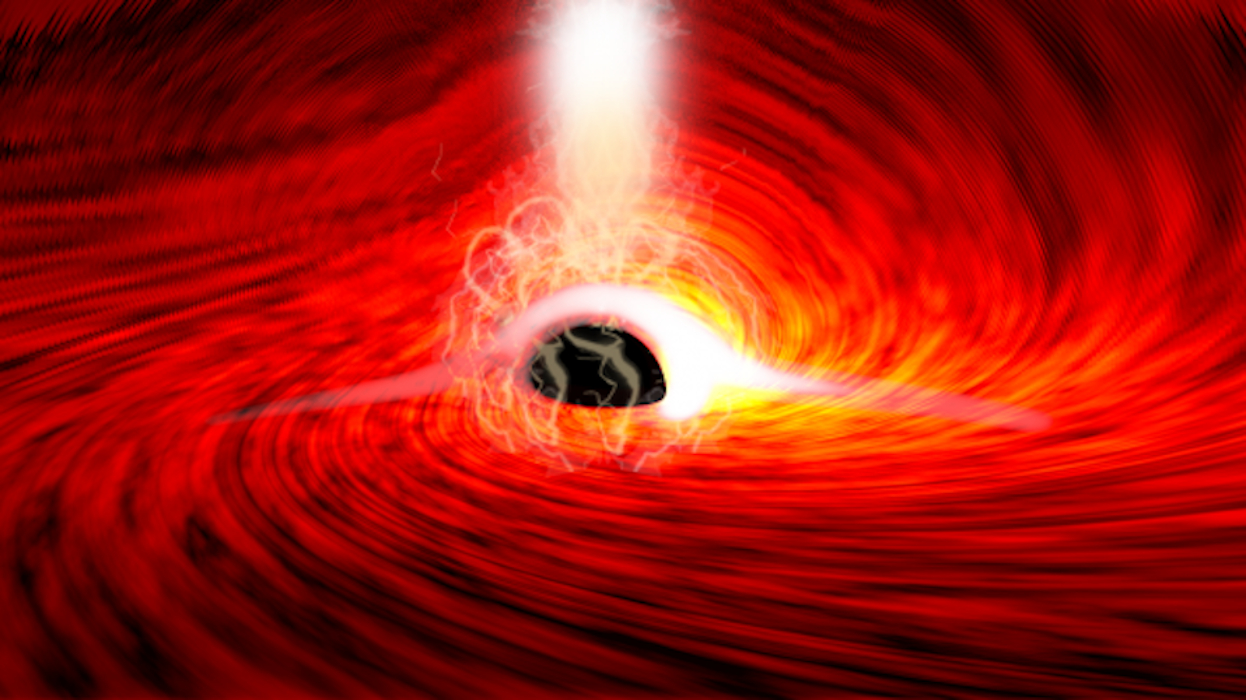
 Credit: Dan Wilkins
Credit: Dan Wilkins
What's Happening Behind a Black Hole?
Although nothing, not even light or other forms of electromagnetic radiation, can escape from inside a black hole, black holes still have ways of making their presence known to us. When matter falls into a black hole, it heats up and radiates, providing us a way to "see" the black hole via the radiation emitted by this material before it passes within the black hole's event horizon. Material that the black hole accretes doesn't fall directly into the black hole, however; rather it forms a hot, thin, spinning disk around the black hole, before spiraling through the event horizon, never to be seen again. Because the inner parts of these spiraling accretion disks are so hot and energetic, they produce enormous amounts of X-rays. Detailed studies of the X-rays from the inner parts of accretion disks provide our best way to test the effects of the strong gravity of the black hole on nearby space, all from a safe distance. A recent study of the X-rays emitted near the supermassive black hole at the heart of a galaxy called I Zwicky 1 by the NuSTAR and XMM-Newton X-ray space observatories has provided us with an extraordinarily detailed look at the spacetime just beyond the edge of a black hole. The illustration above shows the accretion disk (colored red) surrounding the black hole, warped by the black hole's gravity, along with a jet of material escaping from the black hole, and an extended region of hot gas, or corona, close to the black hole. The accretion process can be unstable and variable. By studying the time-delayed echoes of X-ray flashes from the jet and corona that are reflected off the accretion disk, scientists can derive a detailed mapping of the motion of the disk of material, and even the spin of the black hole, and produce a picture of the distortions of spacetime near the edge of the black hole. And, for the first time ever, these scientists have shown evidence that some of the variable emission arises from material that's actually behind the black hole, warped and bent into our view and magnified by black hole's strong gravitational field. These new observations confirm a key prediction of Einstein's theory of general relativity, that gravitational fields can bend X-rays (and other forms of electromagnetic radiation) which can allow us to "see" behind a black hole.
Published: October 7, 2024
<
HEA Dictionary ● Archive
● Search HEAPOW
● Other Languages
● HEAPOW on Facebook
● Download all Images
● Education ● HEAD
>

Each week the HEASARC
brings you new, exciting and beautiful images from X-ray and Gamma ray
astronomy. Check back each week and be sure to check out the HEAPOW archive!
Page Author: Dr. Michael F. Corcoran
Last modified Tuesday, 15-Oct-2024 16:28:22 EDT


